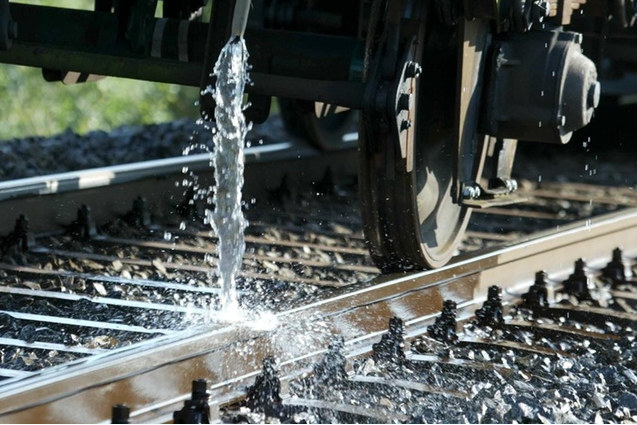Tracks being cooled with water The hottest day of the year in Switzerland caused a headache for the Swiss Federal Railways. Track damage occurred on Wednesday in the Zurich Oberland, canton Aargau near Brugg and in the Geneva area. Railways spokesman Raffael Hirt confirmed that lines had been interrupted in Zurich between Pfäffikon and Wetzikon and in Aargau between Wildegg and Brugg. In Geneva the stretch between Meyrin and La Plaine was blocked between noon and 3.15pm. Tracks in this region had previously been damaged by the heatwave at the end of June and beginning of July. The fact that the tracks do not warp until the evening – because they store the day’s heat – meant that the disruptions had not had a major
Topics:
Swissinfo considers the following as important: 3) Swiss Markets and News, Business, Featured, newsletter
This could be interesting, too:
Nachrichten Ticker - www.finanzen.ch writes Die Performance der Kryptowährungen in KW 9: Das hat sich bei Bitcoin, Ether & Co. getan
Nachrichten Ticker - www.finanzen.ch writes Wer verbirgt sich hinter der Ethereum-Technologie?
Martin Hartmann writes Eine Analyse nach den Lehren von Milton Friedman
Marc Chandler writes March 2025 Monthly
The hottest day of the year in Switzerland caused a headache for the Swiss Federal Railways. Track damage occurred on Wednesday in the Zurich Oberland, canton Aargau near Brugg and in the Geneva area.
Railways spokesman Raffael Hirt confirmed that lines had been interrupted in Zurich between Pfäffikon and Wetzikon and in Aargau between Wildegg and Brugg.
In Geneva the stretch between Meyrin and La Plaine was blocked between noon and 3.15pm. Tracks in this region had previously been damaged by the heatwave at the end of June and beginning of July.
The fact that the tracks do not warp until the evening – because they store the day’s heat – meant that the disruptions had not had a major impact on passengers, Hirt claimed.
If necessary, the rails are cooled with water from a tanker on hot days. The Federal Railways is also examining measures to make its rails more heat-resistant. One of these is painting the sides of the rails with white paint. According to the Federal Railways, studies show that white rails remain up to 7°C cooler.
Another measure being tested is increasing the neutralisation temperatureexternal link of the rails. This is the temperature to which a rail is heated before it is welded into the track bed. The theory is that an increase in this temperature minimises temperature-related compressive forces.
Record temperatures
Switzerland and northwestern Europe are this week experiencing a second heatwave after the one at the end of June. The government has declared a heatwave warning danger level of 3 out of a maximum 5 for the northern side of the Alps, the Valais and southern Ticino. This can mean anywhere from 29°C (84°F) with 75% relative humidity to 34° with 30% humidity. The risk of fire is also high in parts of central and southern Switzerland.
On Wednesday, the town of Sion recorded the highest temperature of the year at 38°C. The highest-ever recorded in Switzerland is 41.5°C on August 11, 2003 in the village of Grono, canton Graubünden, in south-eastern Switzerland.
Tags: Business,Featured,newsletter

